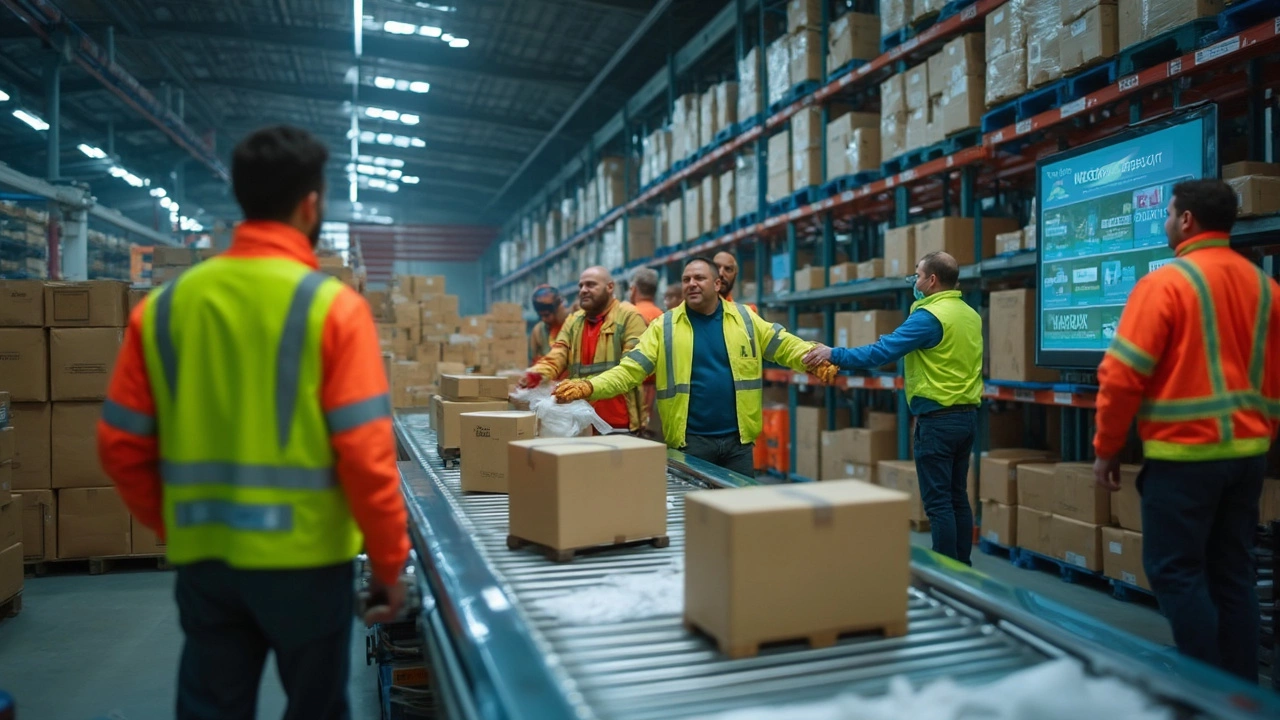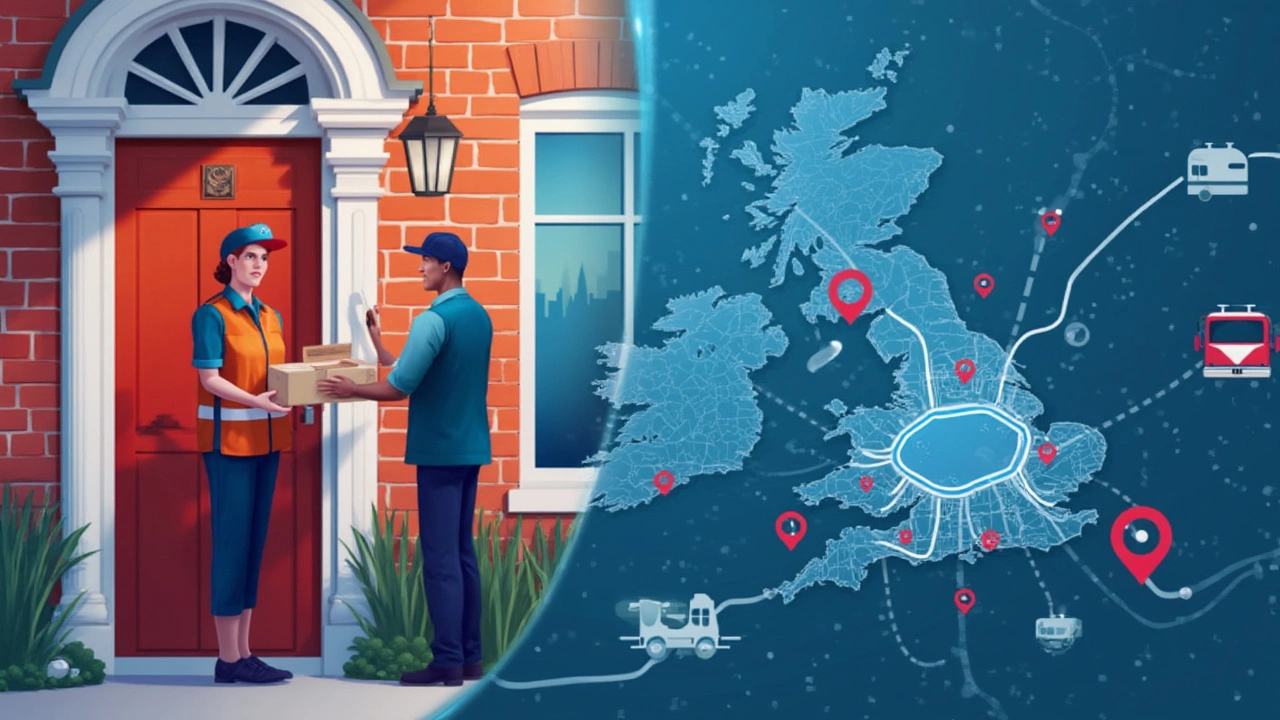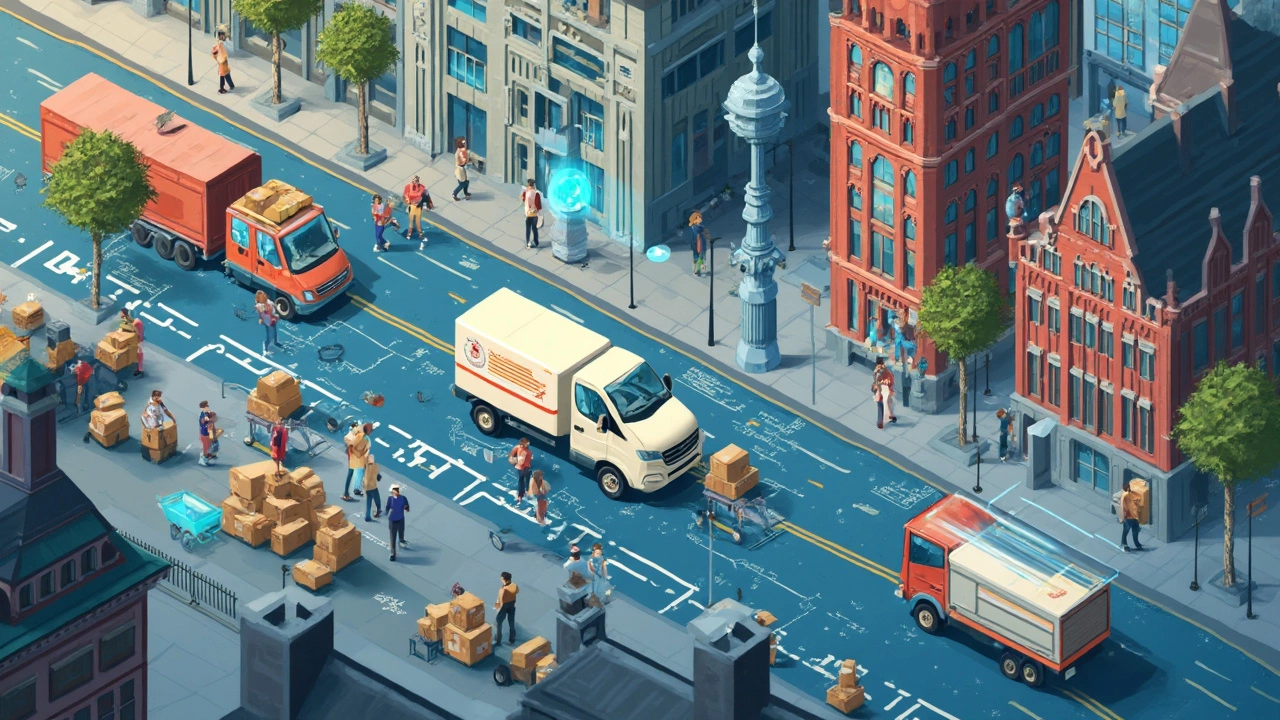Ecommerce Logistics Supply Chain: How It Really Works

Ever wonder what really happens after you hit 'Buy Now' on your favorite online shop? Your order doesn't just teleport to your door (my son Ira would probably pay to see that). There’s a whole behind-the-scenes system that makes sure the right product shows up, hopefully undamaged and on time. That’s the ecommerce logistics supply chain in action—basically, the nuts and bolts of getting stuff from networked warehouses to your hands.
One false move in this chain, and things go sideways fast. Miscounted inventory? Someone gets a refund and a half-hearted apology. Warehouse backed up by one day? Customers hit the review page with their pitchforks. Even something small, like a poorly packed box, can mean returns—which eat up profits and patience on both sides. Understanding how the supply chain works isn't just for warehouse managers. It makes a big difference for small business owners, side hustlers, or shoppers wondering why some parcels never seem to arrive right.
- From Click to Cart: The Order Journey
- Warehousing and Inventory: Where the Stuff Sits
- Picking, Packing, and Fulfillment Made Simple
- Delivery: The Last Mile, The Wildest Mile
- Returns and Reverse Logistics: The Forgotten Step
From Click to Cart: The Order Journey
Buying something online seems simple. You choose what you want, hit the button, pay, and wait for the package. But behind the scenes, that split-second order sets off a chain reaction. That’s how the ecommerce logistics supply chain starts: it begins with your click and ends (hopefully) with a package in your hand.
Here’s the breakdown of what actually happens after you check out:
- Order captured – As soon as you hit “Buy,” your order details fly into the store’s order management system. This is the system that tracks what you bought, your address, and how you paid.
- Inventory checked – The system checks if your item is really in stock. With modern inventory sync, this happens in seconds. If something goes wrong (like overselling), the disappointment is instant, and cancellations hit hard.
- Payment processed – Payment gateways like Stripe or PayPal grab your money. Fraud checks run at lightning speed before the green light is given. According to 2024 data, over 60% of global e-commerce transactions use mobile payment platforms.
- Order forwarded to warehouse or supplier – Whether the seller has their own warehouse, uses Amazon FBA, or drop ships from someone else, your order details get forwarded to the spot where the item lives.
- Confirmation sent to you – After all this, you get that “your order is confirmed” email or text. (And if you’re like my daughter Sylvie, you check tracking compulsively, starting five minutes later.)
Speed matters. Amazon’s research in 2022 reported that every 100ms delay in transaction processing—just a split second—could make customers abandon their carts. Shoppers have zero patience for clunky checkouts. The best online stores use automated systems to trim down this order journey to seconds, not minutes.
| Step | Average Time (Seconds) |
|---|---|
| Order Captured | 1-3 |
| Inventory Check | 2-5 |
| Payment Processing | 2-8 |
| Order Forwarded | 1-10 |
Want smoother orders? Pro tip for sellers: link your online store with your inventory and payments system. If you use Shopify, look into apps that sync with your warehouse in real-time. If you’re a buyer, check for shops that give instant order confirmation and tracking. Those are the stores that usually have their supply chain act together.
Warehousing and Inventory: Where the Stuff Sits
Think of a warehouse as a giant parking lot, but instead of cars, it's packed with thousands—sometimes millions—of different products waiting for someone like you to buy them. In ecommerce logistics, these warehouses are the backbone. If you get this step wrong, everything else turns into chaos fast.
The big players—like Amazon, Walmart, and Shopify—use advanced tech to keep tabs on every single item. Radio-frequency identification (RFID) tags are actually pretty common now, letting workers and computers know exactly where each box of socks or phone charger sits. Even small businesses are using cloud-based inventory tools to stay on top of stock without needing an army of staff.
Here’s a quick look at what gets tracked and how:
- Stock movement: When something comes in, it’s scanned. When it leaves, same thing. If there’s ever a mismatch, alarms go off—or at least they should.
- Space optimization: Smart warehouses don’t just dump stuff anywhere. They use shelf maps to stash fast-moving products near packing stations and slow movers further away, which means quicker turnaround when orders roll in.
- Temperature and safety controls: Some warehouses need climate control if they’ve got something perishable, like chocolate or medicine. Others need locked cages for pricey stuff.
Getting warehouse management right saves a ton of cash and headaches. According to Statista, in the US alone, just over 21,000 warehouses were operating last year—up from around 15,000 a decade ago. Having products stored close to customers also slashes delivery times, which is why neighborhood fulfillment centers have been popping up everywhere.
| Warehouse Feature | Why It Matters |
|---|---|
| Automated Racking | Speeds up locating and picking items, reduces errors |
| Inventory Scanning (RFID/Barcodes) | Keeps real-time track of stock levels, cuts down on lost items |
| Climate Control | Protects perishables and sensitive goods |
| Location Proximity | Shortens delivery time and reduces shipping costs |
If you’re thinking about setting up your own online shop, don’t ignore warehousing. Even if it’s just your garage or a rented locker at first, keep it organized and lean. My daughter Sylvie once sorted her toys by size and color—her stuff was way easier to find than mine, and that’s pretty much the point. Every extra minute saved in the warehouse means happier customers (and way less stress for you).

Picking, Packing, and Fulfillment Made Simple
Here’s where things get real: after your order pops up in the system, someone at the warehouse has to find the exact item on the shelf. This is called picking. It might sound easy, but in a warehouse with thousands of items, organized chaos is the name of the game. The best-run places swear by barcodes and handheld scanners—Amazon, for example, tracks every product by its unique code, and workers (or sometimes robots) follow digital maps to grab it fast and avoid mistakes.
Once picked, the next headache is packing. This isn’t just tossing your hoodie in a box and calling it a day. The right packaging stops stuff from breaking, and good businesses keep it tight to save on shipping costs. Bubble wrap is popular, but a lot of sellers also use padded mailers or crumpled kraft paper for lighter, durable goods. Big players even invest in machines that build custom-sized boxes for every order to cut down wasted space—think less air in every shipment, more savings, and fewer complaints when it arrives at your door.
Fulfillment’s the final step before your order heads out the door. The item gets labeled, scanned again for tracking, and sorted for the right shipping carrier—FedEx, UPS, or maybe a local courier. This is the heart of ecommerce logistics: making sure packages leave the warehouse quickly and accurately, even on crazy days like Black Friday when my daughter Sylvie’s wishlist could fill a small van.
If you’re running a shop, here are some tips that actually work:
- Double-check barcodes and order numbers before packing—mix-ups are a huge headache.
- Use strong boxes, but don’t pay for empty space; custom-sized is always better.
- Automate as much as you can—software for picking routes and inventory means fewer mistakes and delays.
- Set clear cut-off times: orders placed before noon ship the same day, for example. That keeps expectations real.
Here’s a fun fact: Some fulfillment centers ship out over 100,000 packages a day when sales spike. Behind every quick delivery is a well-oiled routine that’s been tested, tweaked, and timed to the minute.
Delivery: The Last Mile, The Wildest Mile
The last mile’s where things get real. This is the stretch from a local distribution hub to your front door, and it’s surprisingly tricky. In ecommerce logistics, the last mile eats up the most cost—sometimes more than 50% of total delivery expenses. Why? Small, spread-out drops are less efficient than loading a bunch of pallets for a single grocery store.
This is the step where packages get delayed, left on the wrong porch, or stolen. Deliveries can be done by courier vans, bikes, or even on foot. Some cities try out robots or drones—Amazon’s Prime Air and Starship Technologies come up a lot in this space—but classic delivery drivers still do most of the heavy lifting. In suburban or rural areas, timing’s even tougher because of long distances or harder-to-find addresses (no kidding—my daughter Sylvie’s friend once got her birthday present dropped a mile away because the house numbers got mixed up).
One big headache is customer expectations. Nearly 90% of buyers say shipping speed affects their decision. Two-day delivery is basically the norm now, thanks to Amazon’s bar-raising. That puts huge pressure on retailers to work with reliable carriers and keep local inventory stocked.
- Route optimization software is a must-have. It cuts fuel costs, saves time, and boosts on-time rates.
- Real-time tracking keeps customers happy and reduces "Where’s my order?" complaints.
- Lockers and local pickup points help avoid missed deliveries or theft in busy cities.
If you’re selling online, always stay on top of your courier’s performance. Some retailers use more than one carrier to avoid disaster if one service gets swamped—like during Christmas season or flash sales.
| Aspect | Cost/Impact |
|---|---|
| Last mile share of delivery cost | ~53% |
| Customers valuing fast shipping | 88% |
| Failed delivery rate (urban areas) | 5-8% |
When you nail the last mile, you build trust fast. Mess it up, and those negative reviews won’t let you forget it.

Returns and Reverse Logistics: The Forgotten Step
Ask anyone who runs an online shop what keeps them up at night—returns usually top the list. After all, about 20-30% of online purchases end up coming back, compared to under 10% for stuff bought in physical stores. Some categories—like clothes or electronics—see even higher return rates. So if you’re in ecommerce logistics, ignoring returns is like leaving the back door swinging open.
Reverse logistics just means what happens when products move backwards—from the customer back to the seller. It’s not just about sticking a label on a box. There are a bunch of real-world headaches if you don’t have a plan. Returns eat into profits, slow down warehouse crews, and create unhappy shoppers if they take too long to process. Here’s how smart businesses keep things running (and keep customers from getting snippy):
- Make returns easy: Pre-paid labels, simple forms, and clear instructions matter. Most shoppers will actually buy more if they know they can return easily.
- Automate what you can: Great software can auto-approve low-cost returns so teams aren’t swamped.
- Restock quickly: As soon as products get back, inspect and reshelve them fast. Idle, returned stock is dead stock.
- Communicate: Update customers about refund progress. Silence = bad reviews.
Want a look at why this step matters? Check out some fresh numbers from 2024:
| Category | Online Return Rate (%) | Avg. Processing Time (Days) |
|---|---|---|
| Clothing | 35 | 7 |
| Electronics | 18 | 10 |
| Home Goods | 12 | 6 |
Surprised? Most people are. Even Amazon spends billions every year just dealing with returns. Some sellers get creative, like offering instant refunds or letting you keep a low-value item instead of shipping it back—it saves them money and hassle.
If you’re running an online business, don’t think of returns as a failure. Treat them as a key part of your customer service. Tidy up your processes, use the tech, and always make it easy for shoppers. That’s how you turn a grumpy return into a loyal customer.